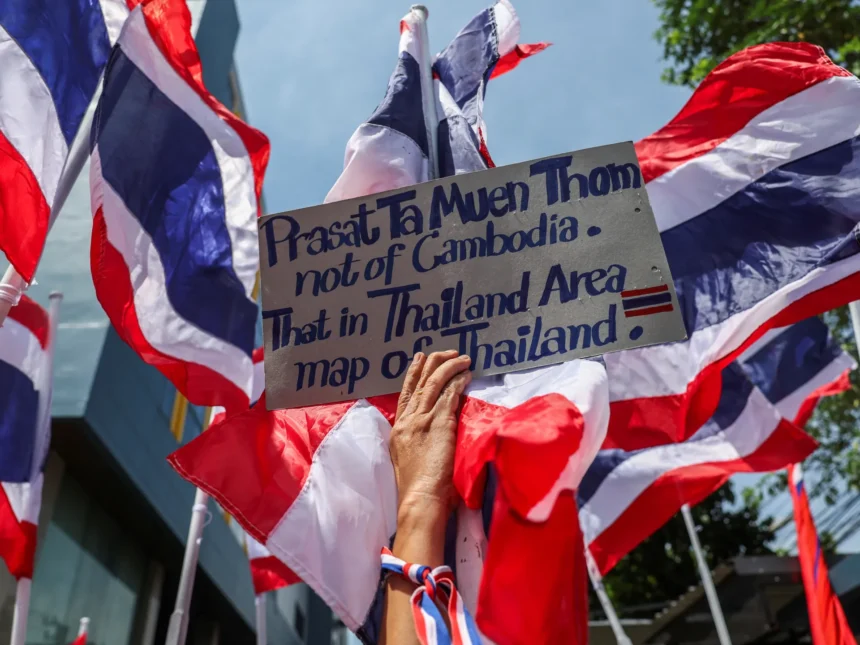
Thailand and Cambodia have agreed to return their military forces to previously agreed-upon positions along their disputed border following a brief but deadly clash in late May 2025. The violence, which claimed the life of a Cambodian soldier, has reopened old wounds in a dispute that dates back over a century.
The Clash That Rekindled Old Tensions
On May 28, 2025, an exchange of gunfire occurred near the contentious region between Cambodia’s Preah Vihear province and Thailand’s Ubon Ratchathani. Cambodia confirmed the death of one of its soldiers and subsequently mobilized rocket launchers and additional troops to the area.
Protests also broke out in Bangkok, with royalist activists blaming Cambodia for the skirmish and demanding a tougher stance from the Thai government.
Diplomatic Reset or Temporary Ceasefire?
In response to the incident, both countries bolstered their military presence at various points along the 817km (508-mile) shared border. However, on June 8, 2025, Thai Defence Minister Phumtham Wechayachai announced that both nations had agreed to return to their prior military positions and revive dialogue through the Joint Boundary Committee (JBC).
Despite this move toward de-escalation, Cambodian Foreign Minister Prak Sokhonn called for international arbitration through the International Court of Justice (ICJ), stating bilateral talks had failed to yield a lasting solution.
Thailand Rejects ICJ Jurisdiction
Thailand has rejected Cambodia’s call to involve the ICJ, maintaining that border matters should be resolved bilaterally. This division over process reveals the deep mistrust that continues to haunt both governments, despite diplomatic overtures and ASEAN involvement.
The Historical Dispute: Preah Vihear Temple
The roots of this conflict stretch back to colonial-era French cartography. In 1907, France drew maps granting Cambodia sovereignty over the Preah Vihear temple region—maps Thailand disputes. Fighting first erupted in 2008 and has since killed at least 28 people across multiple border skirmishes.
In 2013, the ICJ ruled in favor of Cambodia’s claim to the immediate area around the temple, but many surrounding zones remain undemarcated and contested.
Learn more about the Preah Vihear temple dispute.
Military Movements and Border Control
Following the recent violence, Thailand has taken full control over the opening and closing of its 17 official border crossings with Cambodia. Thai military sources cited concerns over “threats to sovereignty and national security.” Meanwhile, Cambodian troops are reportedly still stationed near the clash zone, a sign of lingering mistrust despite the announced pullback.
Is ASEAN Doing Enough?
Despite being founding members of the Association of Southeast Asian Nations (ASEAN), Thailand and Cambodia have frequently clashed over the role of third-party mediation. ASEAN has remained largely silent on the latest skirmish, leading analysts to question its effectiveness in defusing bilateral tensions.
Explore ASEAN’s role in regional peacekeeping.
What Comes Next?
While the Joint Boundary Committee is expected to convene again this week, the underlying issues—sovereignty, historical grievances, and national pride—remain far from resolved. With both sides unwilling to fully compromise and border areas still undefined, the risk of future clashes is high.
Conclusion
The 2025 Thailand-Cambodia border clash is a stark reminder that frozen conflicts can thaw unexpectedly. Though diplomacy has momentarily cooled tempers, the ghosts of colonialism and nationalism continue to shape Southeast Asia’s most volatile border.


